FS Colour Series: Majesty Inspired by Marc Chagall’s Intense Purple
In Marc Chagall’s swirling world of imaginative wonder, the rich, bluish purple hue of Majesty Linen appeared often, staining his canvases with a weighty, dramatic intensity. Throughout his career as a leading modernist, colour was a key component in Chagall’s art, not observed from nature but sprung forth from deep within his mind, expressing the many raging and conflicting emotions he felt so deeply. Dark purples were among his favourite colours because they could add depth to his canvases, a serious and introspective side, perhaps, to all his celebratory frivolity.
Chagall was born in a Hassidic community on the fringes of Vitebsk, Belarus in 1887. He had a simple and strict childhood dominated by poverty, but he often dreamed of escape. Drawing, he discovered from a young age, could transport him into another realm of the imagination, and he soon knew he desperately wanted to become an artist. Chagall began studying painting in a private, all-Jewish art school near his home, but later transferred to St Petersburg to study with the Imperial Society for the Protection of Fine Arts in 1907. He also spent time in St Petersburg studying at the Svanseva School, where he was taught by the legendary set designer Leon Bakst. Despite the formal nature of Chagall’s training, as a student he was already developing his signature style of whimsical fantasy, one that would take flight in the years to come.
With the help of the Russian parliament member and art patron Maxim Binaver, Chagall was able to move to Paris, where he immersed himself in the thriving avant-garde art scene. The move was fundamental to the development of Chagall’s career, exposing him to the ideas of Expressionism, Cubism and Fauvism, all of which would filter through into his paintings. In the years that followed Chagall’s life went through many ups and downs, and he moved between Paris and Russia during the First and Second World Wars, but his art was the constant that held him in place. After the tumultuous war period Chagall spent some time living in the United States, before relocating with his family to Saint-Paul-de-Vence, on the French Riviera.
Chagall’s paintings of the 1950s and beyond became increasingly ambitious, with loose, fluid brushstrokes and daring, eye-catching colours illustrating dreamy, fantastical scenes. In La Fenêtre, 1959, Chagall paints the view through an open window, where a building block is stained deep purple by the encroaching night. Near the window, a series of ghostly, sleepy heads quietly emerge from a bouquet of crimson tipped flowers, and their curious presence here further suggests the twilight zone between day and night. In the later La Chevre Bleue, 1964, Chagall departs entirely from reality, taking us into an otherworldly place of mythical beasts and ghostly spectres. While the floating blue goat head is the centre of the scene, the recumbent figure below is the body and soul of the painting, wrapped in shadowy tones of purple that seem to anchor him to the ground.
Au Cirque, 1976 is one of Chagall’s many paintings dedicated to the subject of the circus, which he adored for all its playful, nonsensical and ridiculous fun. This work is complex, lively and spirited in design, capturing the endlessly swirling energy of the circus, but it is the glowing aura of yellow light that forms a central focus, made brighter by the exotic, moody purples around it. Though Chagall’s personal life had grown increasingly complex by now (he was living with his third wife, Valentina Brodsky), the painting Les Mariés Sous le Baldaquin, 1978-80 is an homage to his first, late wife, Bella Rosenfeld and the innocence of their youthful union. The young couple dominate the central vertical core of the scene, dressed in their wedding clothes, while a band of rich midnight purple expands across the horizon behind them. Its presence here seems deeply symbolic, suggesting the heady, intoxicating richness of first love and its ever-enduring presence.





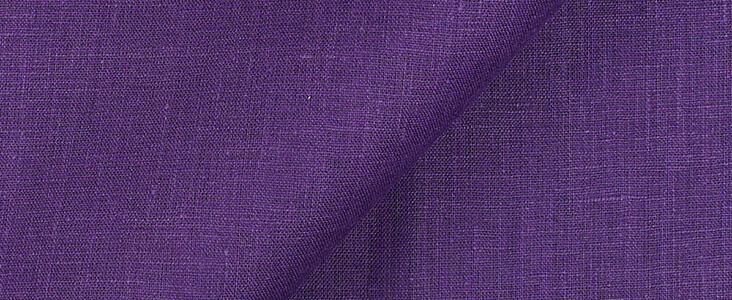
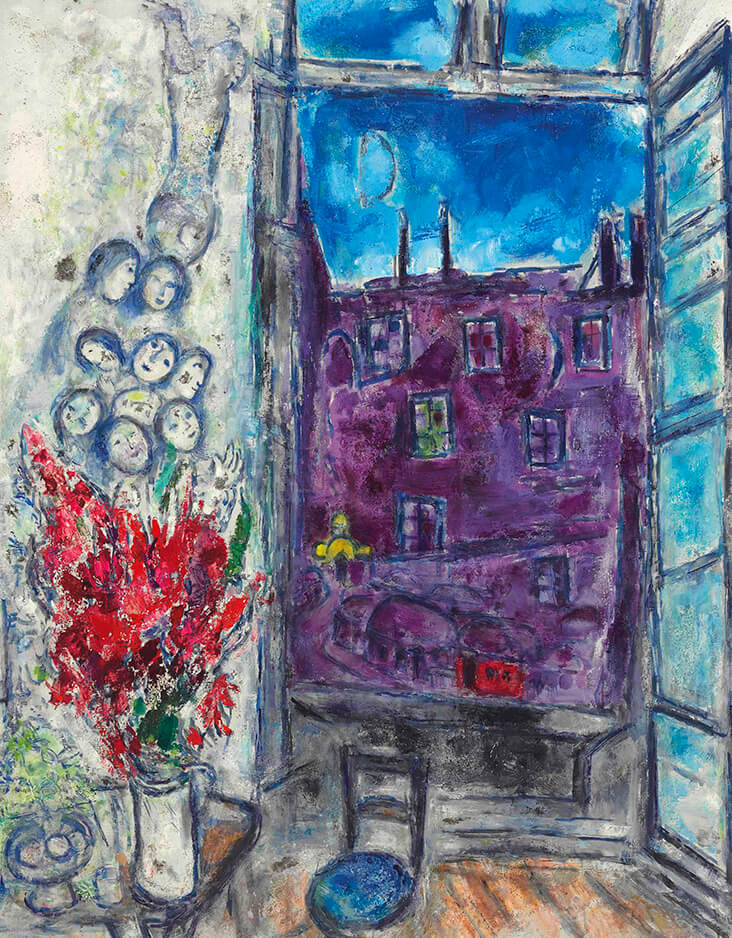
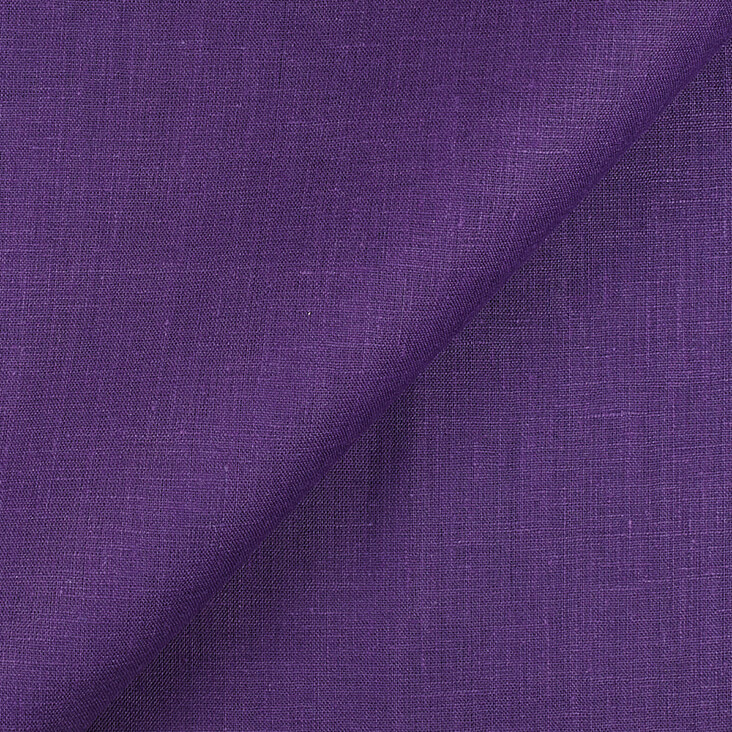
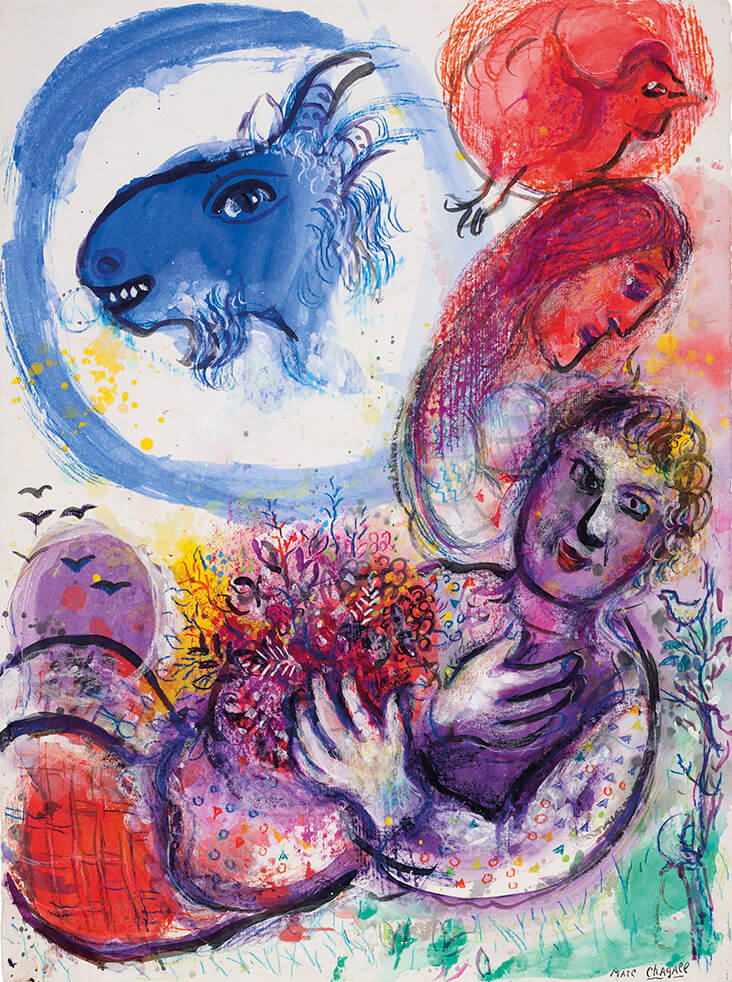
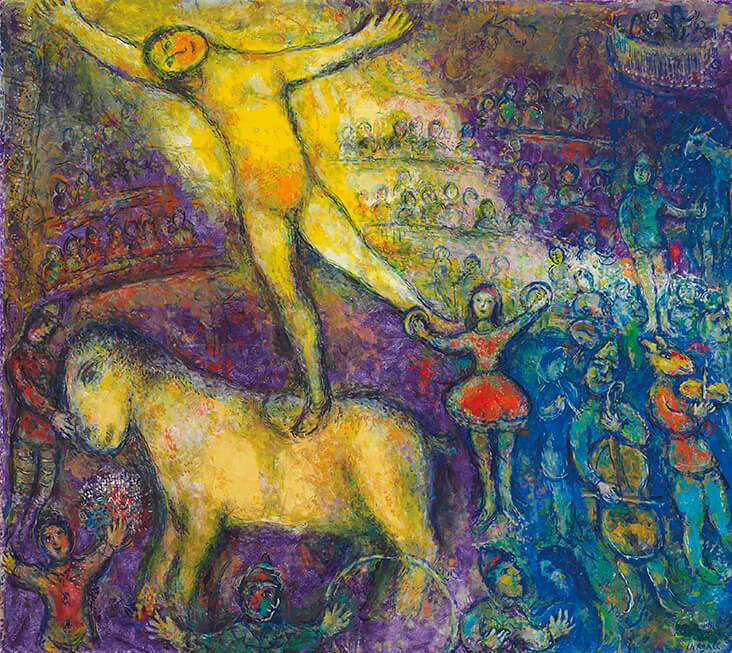


























































Leave a comment